READY TO GET STARTED?
REQUEST A FREE ESTIMATE
Fill out the form below or call (888) 466-7849 for a free, no-obligation estimate.

One thing that is sure to put a damper on your holiday spirit is unwanted pests! The holiday season provides ample opportunity for household pests to make their way into your home. Spiders, rodents, ants, ticks, and other overwintering pests will commonly invade in search of food, water, and shelter.
Holiday pests will use Christmas trees, wreaths, firewood, decorations, storage boxes, luggage, and more to hitch a ride into your home. Some pests will hide in the branches and crevices of Christmas trees, wreaths, garland, and firewood. They can even lay eggs which will then hatch after you bring them inside. Mice and other pests will take refuge inside your storage boxes that hold decorations. You may find live pests, dead pests, or droppings inside these containers. You may also find that they have chewed or damaged wires inside the box.
Increased travel at the holidays increases the risk of bed bugs. These pests hitch a ride on unsuspecting travelers’ luggage, coats, purses, and more. The kitchen is often the central gathering place for holiday cooking and meals. It can also be a big source of food for unwanted pests. Crumbs, spills, leftovers, and dirty dishes all provide an easy food source for holiday pests.
Don’t let pests ruin your holiday plans. Keep them away with these 5 holiday pest control tips.
Pests can come indoors on live trees, wreaths, garland, and firewood. Carefully inspect these items outside before bringing them inside. Make sure to check for live pests, nests, and eggs. Shake them out carefully to disturb any slumbering pests and to knock off any hidden pests.
Pests will hide out in boxes used to store decorations and other holiday items. Unpack these items outside and inspect them all carefully for signs or pests including dead bugs, live bugs, droppings, gnaw marks, and other damage. Carefully check strings of lights and other wires for signs of chewing.
Holiday meals are centered around the kitchen. Clean up the kitchen after cooking. Wash dishes or load the dishwasher and don’t leave dirty dishes out overnight. Sweep up any crumbs from the floor and clean up spills immediately. Make sure to empty the trashcan frequently, especially before bedtime.
Bed bugs are common at the holidays because of the increase in travel. Whether you are going away or you have guests coming in, inspect the bedding carefully for bed bugs. Signs of bed bugs include live bugs, reddish brown spots on bed linens, and shed skins. These can be found on beds, mattresses, box springs, linens, curtains, furniture, and even baseboards. Check luggage before bringing it into the house. Wash clothes in hot water and dry on hot heat as soon as you return home.
At the end of the holidays, taking down decorations and storing them for next year becomes a priority. Store your holiday decor in plastic storage bins with sealing lids rather than cardboard boxes or bags. Don’t pile discarded trees, garlands, or cut firewood near your home as these can attract termites and rodents.
The holiday season is a time of great joy, family, and friendship. Don’t let holiday pests ruin your year. If you have a problem with any type of critter in your home, contact your local pest control company for a free inspection and comprehensive treatment plan.
Crawlspace Enclosure: The Cure For Cold Feet
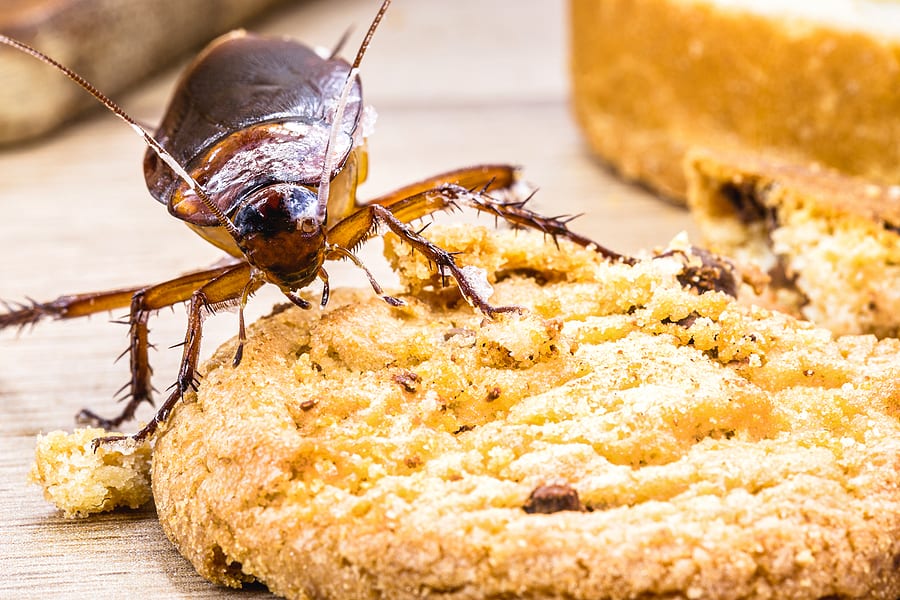
As we gear up for the holidays, we all start to see ourselves spending more time in the kitchen. The kitchen, often the central gathering spot for many families across the country, is a place where finding pests is certainly not ideal. While you continue cooking and gathering with your family this holiday season, keep in mind some of these tips to keep your kitchen pest-free!
Most pests, like cockroaches and rodents, are searching for both moisture and a food source; and during the colder months they also look for a warm place. If food is left out, it’s likely a pest will contaminate it. Roaches can be dangerous as they can spread bacteria and human pathogens when leaving their fecal matter and other debris in or around food.
After cooking and eating, wipe down any crumbs and spills from your countertops, tables, floors, and even shelves. Wash all dirty dishes and drain the dirty dishwater after each use.
Keeping your home well ventilated and dry can help tremendously with keeping pests out. As most pests are attracted to moisture, certain areas of the house can provide the ideal breeding ground for them such as basements, attics, and crawlspaces. They can then migrate to your kitchen in search of food. Try using a dehumidifier in these areas to help decrease the moisture throughout. You may also consider a crawlspace enclosure to help with eliminating moisture and increasing energy savings for your home.
While we can do all the cleaning in the world to keep pests out, sometimes they still find their way inside, even in a clean home! Pests like spiders, fruit flies, and ants can easily sneak inside through the tiniest of gaps and holes. To prevent them, inspect the outside of your home for any potential entry points and seal them up with caulk or steel wool. Don’t forget to repair any broken windows and screens too.
If you feel overwhelmed with the holidays and having to deal with pests in the kitchen, consider reaching out to your local pest control company where they can identify entry points and set up a customized treatment plan.
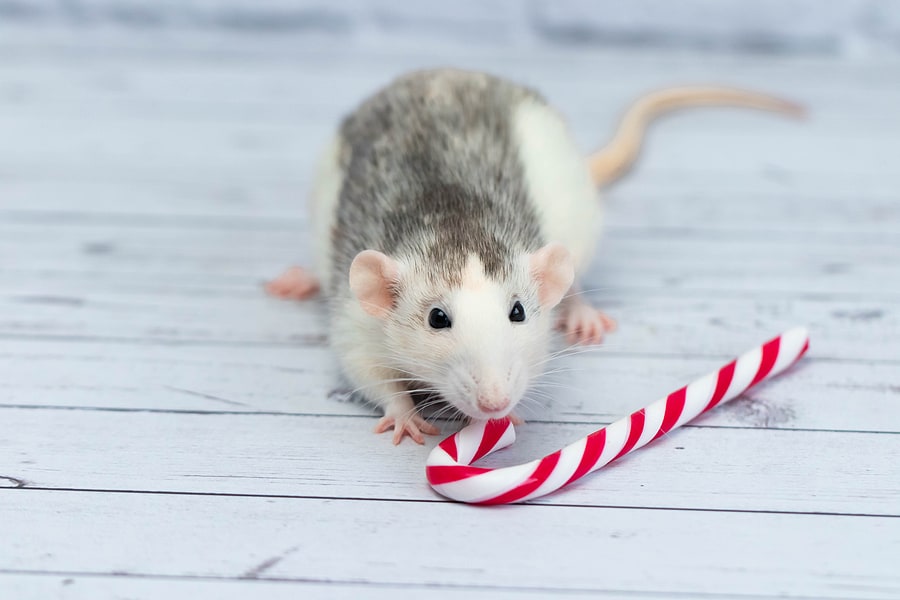
December is here, officially kicking off the holiday season! Celebrating the holidays with loved ones is important to many families across the country. While we gear up for family get togethers and putting up our favorite decorations, it’s important to remember that even those beloved decorations can allow pests to enter your home!
Holiday Decorations
Many of us store our decorations in attics, basements, and garages. These places are cold and dark, and if there’s a leak, provide water sources, making them ideal habitats for pests! Your stored decorations also provide an undisturbed hiding place for mice, rodents, spiders, and more, who crawl into the storage boxes you put away last holiday season!
To make sure you don’t bring them into your living space, carefully inspect and unpack these items outside first. Keep decorations like foliage, potpourri, and Indian corn in air-tight containers during off-seasons to help prevent pests for next year.
Christmas Tree
If celebrating Christmas, many homeowners buy a real Christmas tree and wreath each year. Unfortunately, pests like spiders, mites, moths, and even squirrels will hitchhike on these decorations and into your home!
Before bringing any of these items in, ensure that you’re inspecting for overwintering pests outside by shaking them. You can also check for any droppings, gnaw marks, or other damage from these creatures before bringing them into your home.
Firewood
With the holidays comes colder weather. Some of us are lucky enough to have a fireplace to keep warm and cozy throughout the winter season. It’s important to be cautious when bringing firewood indoors. Pests like spiders, termites, and ants will hide out on the firewood and hitch a ride indoors. Make sure you inspect the wood before bringing it inside and keep it stored at least 20 feet from your home on a raised platform.
If you suspect you have a holiday pest problem, consider reaching out to your local pest control company who can provide you with an evaluation and prevention plan.
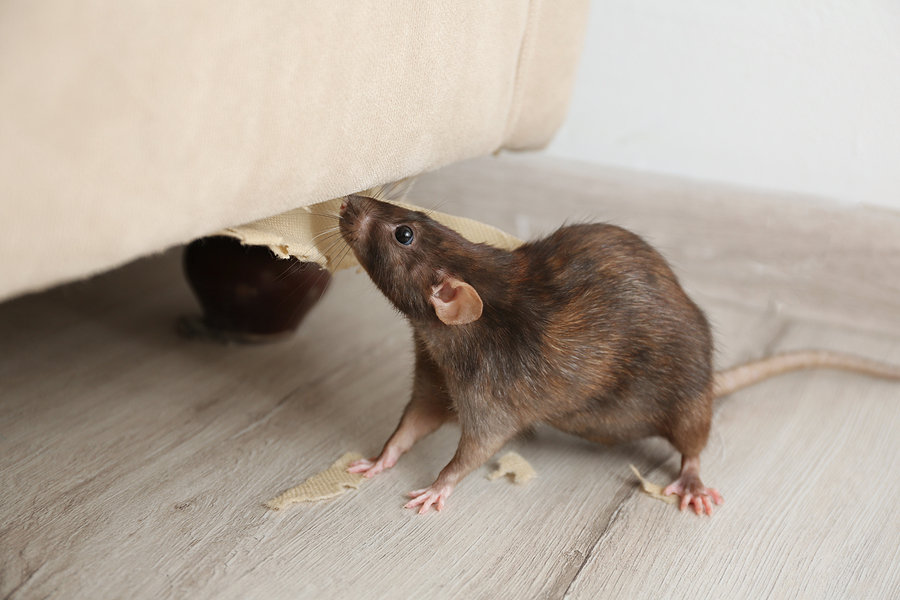
You’ve found all the signs and you’ve confirmed it – there’s a rodent in your house. But is it a rat or a mouse? Does it really matter? How can you tell? Although there are significant differences in rat vs mouse, it can be hard for the average homeowner to distinguish between the two. The behavior, diet, and habitat of each of these pests affects how they are eliminated and prevented. Proper identification is essential for effective rodent control.
There are over 70 species of mice and rats in the United States. The most common are the Norway rat, the roof rat, and the house mouse. Let’s take a look at the difference between rats and mice and why it matters.
Mice are curious and will investigate anything new they come across. Because of this, you can put set mouse traps directly in their path. Mice can stand on their hind legs when they are supported by their tails. They are excellent jumpers, swimmers and climbers and are extremely fast runners. Mice are nocturnal and most active from dusk until dawn. They do not like bright lights.
Rats are more cautious than mice. They will avoid new things until they get used to them being there. Because of this, unset traps should be placed in their path first to let them get used to them and then replaced with set traps later. Rats are strong swimmers and will often live in sewers, allowing them to enter buildings through broken drains and toilets. They will climb to get to food, water, and shelter. They follow regular routines and paths each day.
House mice are much smaller than their rat cousins. They have small heads, small feet, pointed snouts, and large ears with some hair on them. They are usually light brown in color with some gray shading and dark tails. Their droppings are shaped like small rods.
Norway rats have heavy, thick bodies. They are the largest of the three common rodent species. They have blunt snouts and short ears with dark hair. They are usually brown with black shading and shaggy coats. Their tails are dark on top and pale underneath. Their droppings are shaped like capsules.
Roof rats have light slender bodies. They have pointed snouts and long ears with no hair. They are usually gray in color with black shading and smooth coats. Their tails are dark. They have droppings shaped like spindles.
Mice prefer cereal grains and plants but they will feed on almost anything.
Rats will eat nearly anything, as well, but prefer fresh grain and meat. Rats also need 1/2 to 1 ounce of water a day to survive.
Mice prefer to nest near their food sources. They will use any soft material or shredded paper to build their nests.
Rats will burrow under buildings, along fences, and under plants or debris. Norway rats typically live in these burrows while roof rats prefer to nest in walls, attics, and trees.
Mice will have up to 10 litters per year and typically live from about 9 to 12 months.
Norway rats will have up to 6 litters per year and live 12 to 18 months.
Roof rats will have up to 8 litters per year but have fewer babies in their litters than Norway rats do.
The house mouse is considered one of the top 100 world’s worst invaders. They are afraid of rats because rats will eat them. Mice are also color blind.
Rats are nocturnal and have poor eyesight. Norway rats and roof rats do not get along and will actually fight each other to the death. Norway rats tend to live on the lower floors of buildings while roof rats will live on the upper floors.
Why does it matter whether you have a rat or a mouse? Both rat and mice droppings contain pathogens that are dangerous to humans. Both are also very good at breeding and increase their populations quickly, making them harder to control. The significance in properly identifying rats vs mice affects how they are controlled and eliminated. Because they each have such different diets, habitats, and behaviors, different methods are employed when it comes to getting rid of them. What may work for house mice might not be effective in controlling rats and vice versa.
If you have an issue with rodents or any other pests, contact a professional pest control company who can not only properly identify the nuisance pest, but also set you up with the appropriate treatment and ongoing prevention plans.
What Attracts Moles to Your Yard?
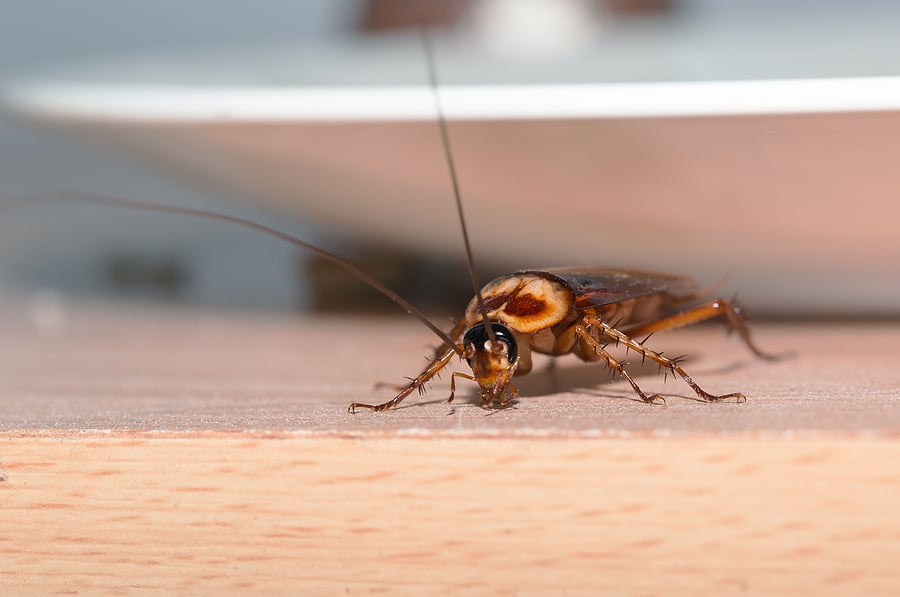
Some pests hibernate when the weather gets colder, while others seek out warmth inside of our homes. These overwintering pests will sneak through any open crevice or gap from the exterior of your home and can stay there all winter long undetected. Here are a few crawly pests that could be hiding out in your house!
German Cockroaches
The German cockroach is a common roach species found throughout the world. These roaches range from 1/2 to 5/8 inches and are brown with two-longitudinal stripes running down the thorax. They prefer to live in smaller areas close to food and moisture, such as inside pantries, basements, and bathrooms. Roaches are dangerous as they can contaminate food sources, spreading bacteria and human pathogens by leaving their fecal matter and other debris in and around food and food preparation areas.
To prevent cockroaches, make sure you keep your kitchen counters clean and free of crumbs. Vacuum frequently and always dispose of the garbage regularly. Look out for any leaks in the kitchen and bathrooms, as this moisture will attract roaches.
Brown Recluse Spider
Measuring the size of a quarter, the brown recluse spider can exist in large numbers. These spiders have six eyes arranged in three pairs, which is quite different from other species of spiders that have eight eyes arranged in two rows. The brown recluse prefers to live in dark areas such as under furniture, in wall voids, basements, crawl spaces, and in closets. While these spiders typically spin their webs in darker places, they can also found in cardboard boxes, along window molding, and even in shoes. The brown recluse can be dangerous to humans, as they will bite and inject venom if disturbed or threatened.
To prevent these spiders from entering your home, keep the trees and shrubs trimmed away from the house and roof. Repair any loose siding or shingles as they can easily sneak in through any gaps and openings. Consider installing a mesh cover or cap over chimneys to prevent entry.
Bed Bugs
Bed bugs are 3/16” to 1/4” in length or about the size of an apple seed or a pencil eraser. They are long and brown, flat in shape with an oval-shaped body, and brown in color. These pests enjoy harboring in cracks and crevices during the day and will come out at night to feed. You will typically find them in beds, mattresses, box springs, rails, headboards, and footboards. Bed bugs will bite humans on areas of skin that are exposed during sleep. Bed bugs are also notorious for hitchhiking from place to place through luggage, following you back home after traveling.
To prevent bed bugs, routinely check linens, mattresses, and even pet beds for live bugs. Thoroughly inspect any used furniture before bringing it inside your home. If you have recently travelled, inspect your luggage before bringing it inside your home, immediately take your clothes out and wash them in hot water, and dry them on high heat.
If you suspect that you have any of these pests inside your home, consider reaching out to your local pest control company where they can help identify, inspect, and provide a prevention plan.

It’s finally the holiday season when we can celebrate with our favorite dishes and desserts! While we might find ourselves stocking up on ingredients for our upcoming dinners, you could be providing certain “pantry pests” their holiday meals! Here are two common pantry pests to look out for this holiday season.
Indian Meal Moth
The Indian meal moth is famously known for feeding on pantry items. These pests have a two-toned wing pattern with tan or copper colors throughout their oval-shaped body. They have six legs and a 1/2” to 5/8” wingspan. These insects are highly attracted to light and anywhere they can find food stored. They prefer to feed on dried fruits and vegetables, grains, seeds, nuts, candies, chocolate, pet food, and powdered milk.
Merchant Grain Beetles
The merchant grain beetle has a dark brown body, six legs, and six saw-like teeth on each side of their bodies. Their narrow oval body shape allows them to crawl inside of packaging to eat, live, and reproduce. While their name suggests that they feed on grains, they actually prefer to feed on cereals, cake mixes, macaroni, cookies, and chocolate! Once these insects infest food packages, they immediately contaminate them.
Prevention:
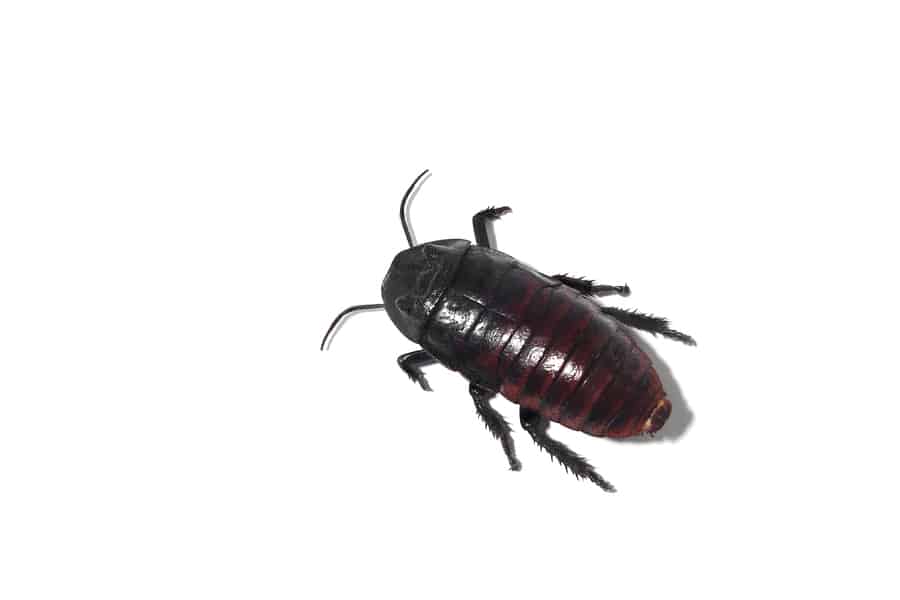
One of the lesser known species of cockroaches, the oriental cockroach (Blatta orientalis), also known as the black beetle cockroach and the waterbug, is actually one of the largest next to its cousin, the American cockroach. These pests are great at hiding and fitting into tight locations and have adapted to thrive both indoors and outdoors. Let’s take a look at how to identify Oriental cockroaches, as well as some cockroach prevention tips.
The Oriental cockroach is dark brown to nearly black in color with a smooth shiny exoskeleton. Although not quite as big as American cockroaches, these bugs do get up to 1 inch in length. Males are slightly shorter than females with stubbed wings and females are longer and skinnier without wings.
These roaches are found throughout the United States and prefer warm, moist, dark locations. They thrive outdoors, often residing under piles of leaves, mulch, stone, wood, flower beds, and debris. They will travel through sewers and can come into your home through pipes and drains. Indoors, they can be found in rarely used sink drains, garbage disposals, under cabinets with plumbing, and in bathroom voids.
Oriental roaches are omnivores, eating nearly any type of food source but preferring decaying plants and rotting garbage. They will also make do with crumbs, pet food, and leftover human food, too. They are very dependent on water which is why they are usually found in areas with high moisture. They can survive up to 1 month with no food but only 2 weeks without water.
These cockroaches are slower than most of their counterparts. They prefer to be active outdoors and are nocturnal. Males have wings but don’t fly. They have a lifespan of 1 to 6 months and their reproduction is seasonal – they produce more eggs in the spring and summer than they do the rest of the year.
Oriental cockroaches are dangerous to humans as they are known to transmit bacteria such as E. coli and salmonella. Because they eat decaying food and other material, they can contaminate food and other surfaces with the pathogens picked up from their food sources. They also excrete odors which can trigger allergies and asthma in those affected.
There are 3 main signs of Oriental cockroaches in your home:
If you have a problem with cockroaches of any kind, contact a professional pest control company for proper identification, potential points of entry, and the most up to date treatment options available.
Kudzu Bugs vs. Brown Marmorated Stink Bug: What’s the Difference?
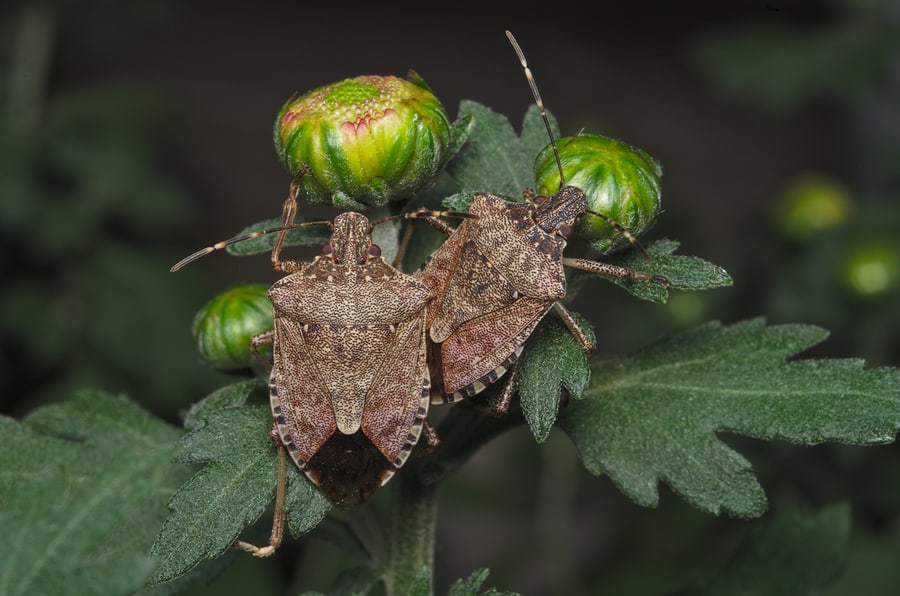
Noticing small, greenish-brown bugs congregating throughout the cracks of your home’s foundation or even inside your house? While many might identify these insects as stinkbugs, they might actually kudzu bugs! Kudzu bugs and brown marmorated stinkbugs are often confused with each other. While these pests do have some similarities, they are quite different from each other. Let’s breakdown how these insects are both alike and different!
How They’re Alike
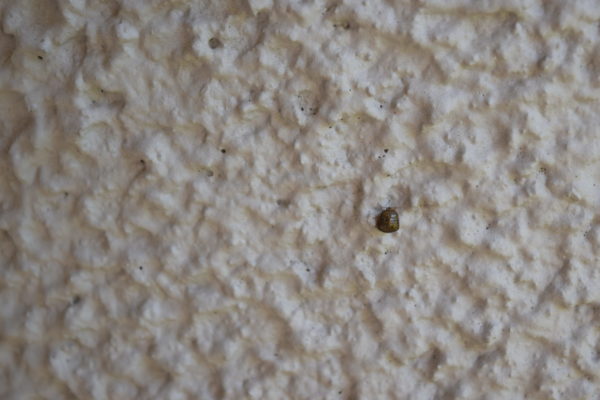
Kudzu Bug
Both stinkbugs and kudzu bugs are known to be a nuisance to all homeowners. Both are highly attracted to warmth and will enter homes to find a warm place to gather. When disturbed, both species will emit an alarming chemical defense against predators. When crushed, they release a very unpleasant odor from their bodies. Even worse, if several of these insects are crushed together, the smell left behind is extremely powerful.
How They’re Different
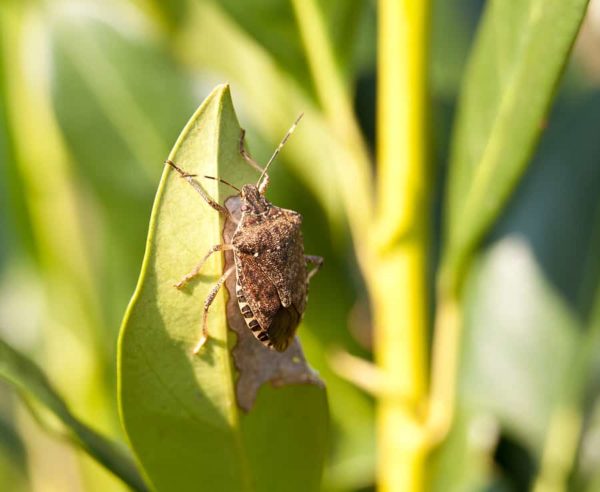
Stinkbug
A stinkbug’s shield-like body is around 1/2″ long and 1/2″ wide with shades of brown across its entire body. Their body size is a bit larger than a kudzu bug, with the kudzu’s measuring only 4 to 6 millimeters long. Kudzu bug bodies are olive green and brown, with a flat, squarish body shape.
Stinkbugs will typically feed off ornamental plants, fruit trees, legumes, and vegetables. The kudzu bug prefers to eat kudzu vines but will occasionally eat soybeans and most any other type of beans. While both stinkbugs and kudzu bugs utilize different types of food sources, both will destroy crops, making both species agricultural pests.
How to Prevent Them
If you notice either of these pests infesting your home, try some of these pest prevention tips below:
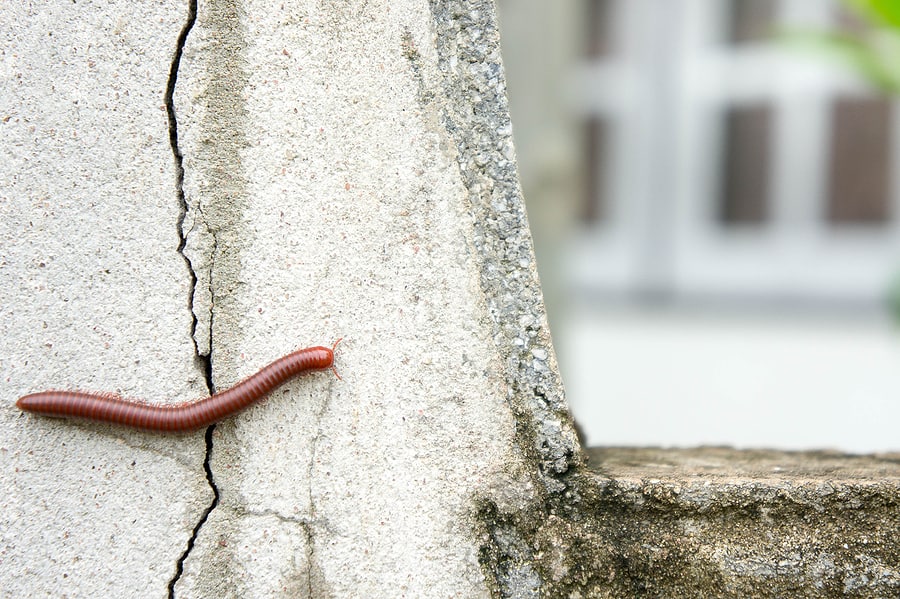
Millipedes (“thousand feet”) are one of the most common pests found after rainstorms. These moisture loving creatures are usually tan or black in color with segmented bodies and dozens of legs. They have small antennae and large mandibles and are often mistaken for centipedes. Because they seek moisture and humid environments, they are most often found outside in your yard where they burrow and hide in small spaces. They can also be found indoors near patio doors, windows, and in basements. If they are found indoors it is usually because they have wandered inside by mistake.
Millipedes will eat plants and small insects. They usually eat decaying matter or plants that are already dead so they are generally harmless to healthy plants; they will, however, eat young seedlings. Millipedes don’t bite, sting, or transmit diseases to humans. They are considered by many to be beneficial to have around as they eat decaying matter and help control populations of smaller insects.
If you do feel the need to keep millipedes out of your home, there are several natural options you can try for both repelling and eliminating these pests. Here are a few of our favorites:
DIY millipede traps are pretty easy to make plus you don’t have to be there to check it! Put the piece of fruit inside the bottle so that it sits in the bottom. Grab a piece of vinyl tubing (about 6 inches in length), a plastic soda bottle, some caulk or tape, and a piece of ripe fruit. Try to get a piece of tubing that just fits snugly into the lip of the bottle. Slide the tubing into the bottle so that about 2 inches of tube is inside and seal it with the caulk or tape. Lean the bottle on its side, making sure that the tube doesn’t touch the edges of the bottle. Millipedes will crawl into the tube to get to the fruit as it starts to rot and not be able to crawl back out. You can place several of these traps anywhere you see millipede activity.
One of the easiest and quickest ways to get rid of millipedes is to manually remove them. Try not to just squish them with your foot as they will give off a foul odor similar to stinkbugs. You can use a broom and dustpan to sweep them up and dump them in a bucket of soapy water to kill them; or you can just vacuum them up with a vacuum cleaner or shop vac and dispose of them outside.
Diatomaceous earth is a crystalline powder substance that can be used for a variety of pests. The crystals in this natural product pierce the hard exoskeletons of pests, causing micropunctures all over their bodies. This then dehydrates and slowly kills the pests over time. DE can be sprinkled around room perimeters, under appliances, under door gaps, on sliding glass doors, around foundations, in houseplant soil, and under fences. DE is safe to use by and around humans.
Boric acid is similar to DE. It also cuts up the pests as they crawl across it, causing them to slowly dehydrate. It also upsets the digestive system of millipedes, causing it to work faster than diatomaceous earth. Boric acid should not be used in areas with kids or pets.
Essential oils are more effective as repellents rather than insecticides. Tea tree oil and peppermint oil are the two most common for use against millipedes. Essential oils should always be diluted with water before use. Apply the oil mixture around entry points like windowsills, door gaps, basements, vents, foundation cracks, and crawlspaces. You can also apply them outdoors in any areas millipedes may be, as long as it is shielded from rain.
Like essential oils, cayenne pepper works best as a repellent rather than an insecticide. Cayenne pepper also works for other pests besides millipedes. You can buy whole cayenne peppers and grind them yourself or buy the powder. Sprinkle the pepper in any areas where millipede activity is spotted. You can also sprinkle it around foundations and entry points to your home.
Like any pest, prevention is key to heading off infestations before they get out of hand. While the above methods are great for existing millipede problems, keeping them out of your house in the first place is the most natural remedy of all. Try these millipede prevention tips to help keep millipedes away.
Millipedes are attracted to moisture so keeping your home dry will help make it less attractive to them. In kitchens and bathrooms, wipe up any excess moisture from handwashing, dishes, etc with a towel. Use less water when possible and don’t turn faucets on full blast. Seal or cap any containers with liquid in them. Try to wash dishes all at once instead of throughout the day. In basements and garages, wipe up any excess moisture that accumulates. Try to clean up water spills immediately. Dry cars, boats, tools, and equipment outside. Store any wet equipment outdoors. Use a dehumidifier if necessary. Outside, clear out any clogged gutters or install gutter guards. Keep water away from your foundations. Fix any damaged drains, sloping tiles, and unlevel ground. Repair sprinkler systems. Practice good pool maintenance. Avoid overwatering your lawn and try to water early in the morning so the moisture has time to dry out before nightfall. Adjust your sprinklers to prevent pooling.
Remove any mulch, leaves, grass, hedge clippings, boards, firewood, boxes, stones, etc. from around foundations. If you can’t remove them, try to elevate them. Keep grass mowed and plants pruned. Don’t overfertilize your lawn. Secure your trash and compost. Keep your floors clean and dry (this eliminates both food and water sources for millipedes). Caulk any cracks or crevices in foundations and around wiring and plumbing. Make sure weatherstripping and thresholds are in good repair and fit tightly. Caulk around doors and windows and expansion joints where sidewalks, patios, sunrooms, etc. are next to foundations.
While millipedes aren’t harmful (and are even considered beneficial by some), they can be a nuisance if you find them in your home. If you have an issue with millipedes or any other pest, contact your local pest control company for a free evaluation and appropriate treatment plan.
What’s Attracting These Roaches?!
Protect Your Vehicle From Lovebugs
What’s Attracting Birds into My House?